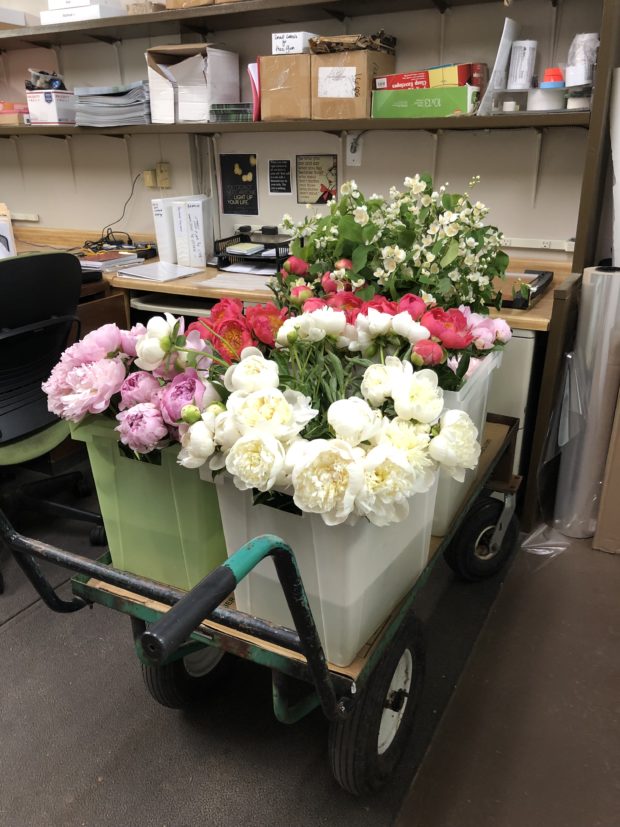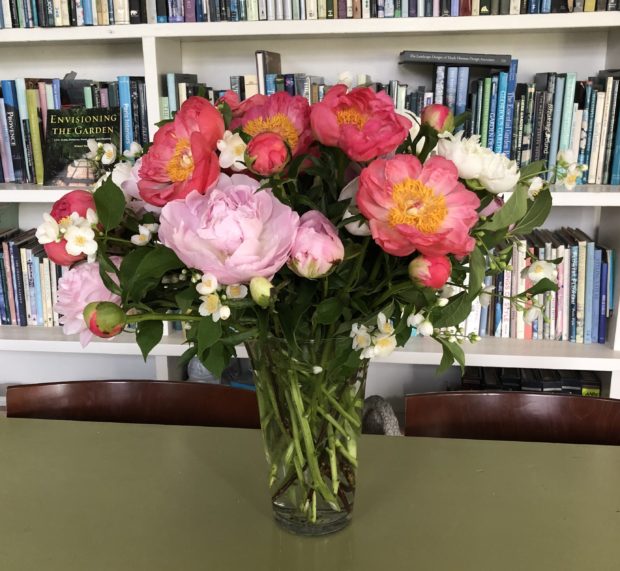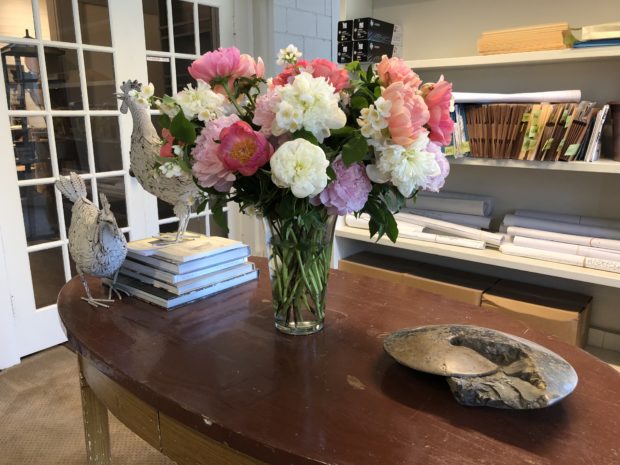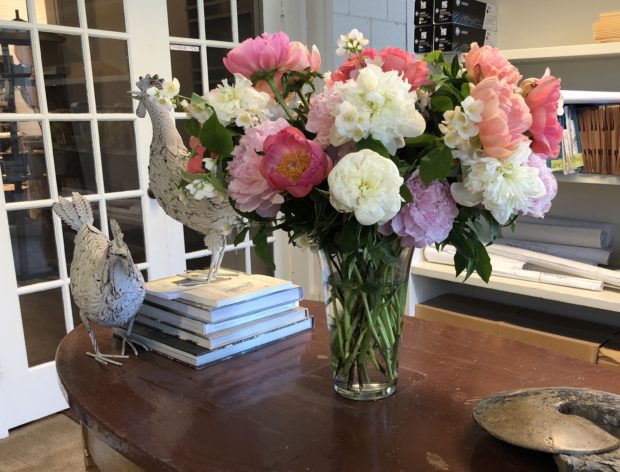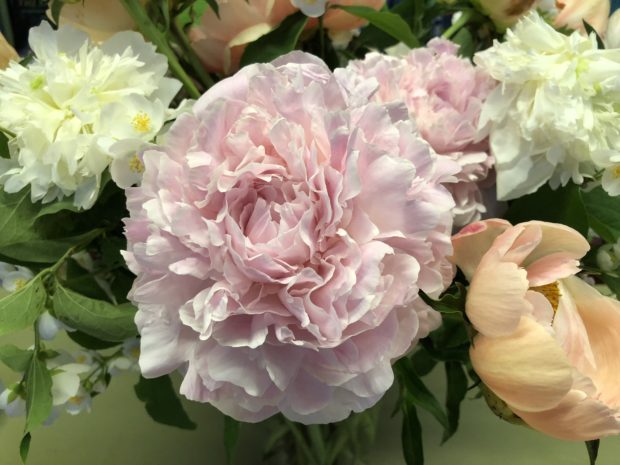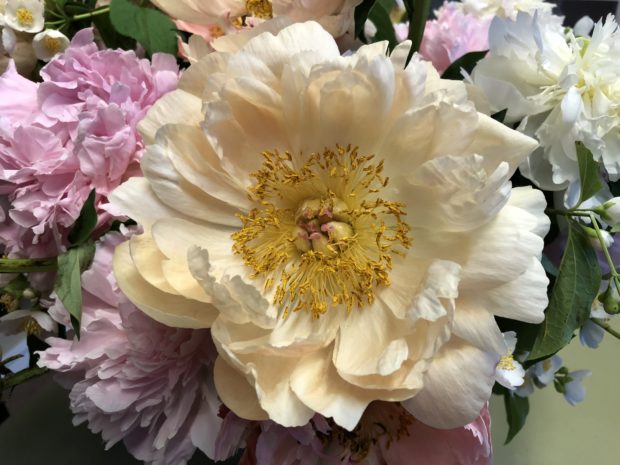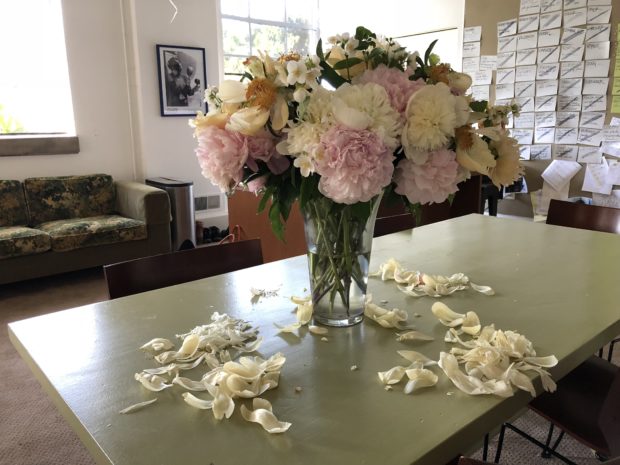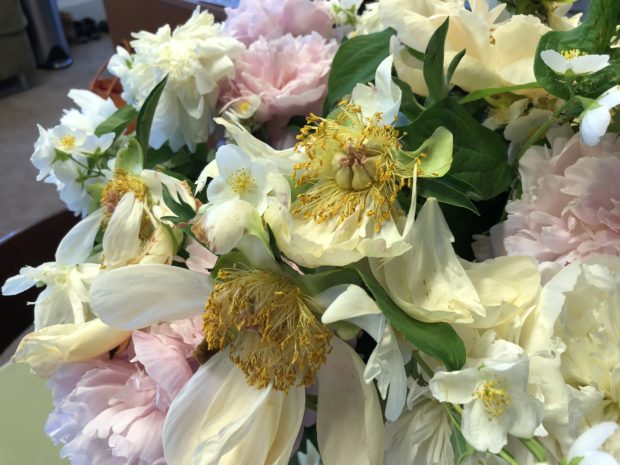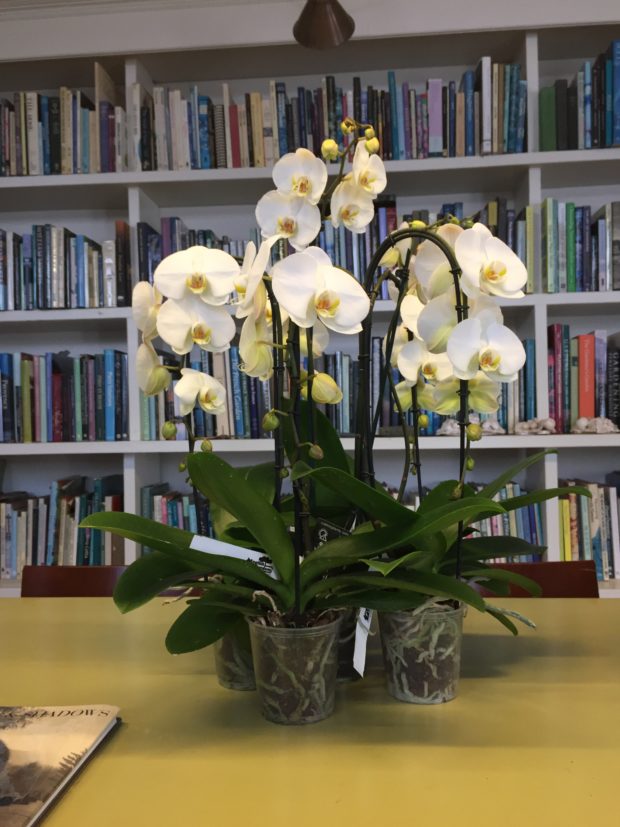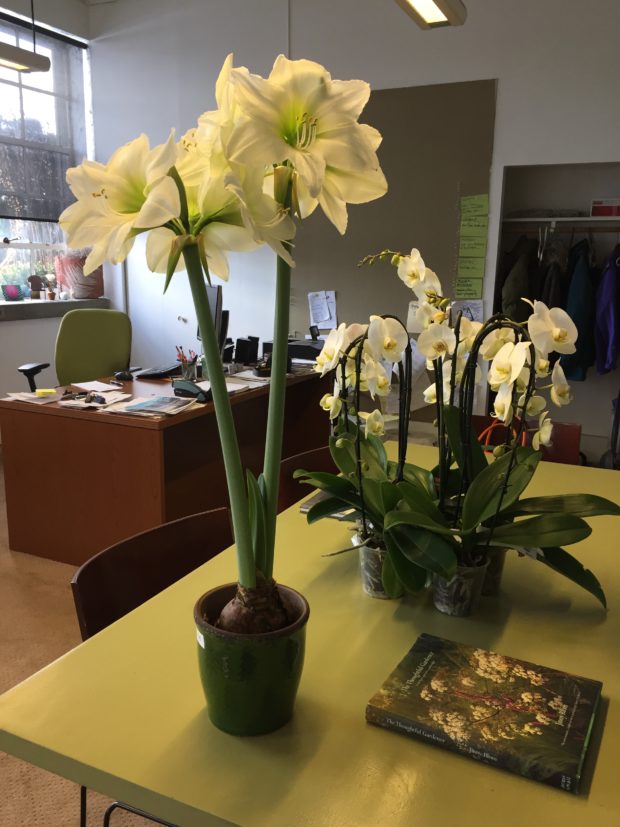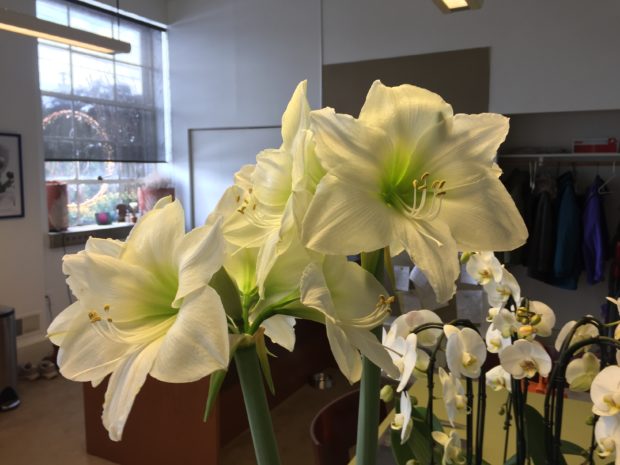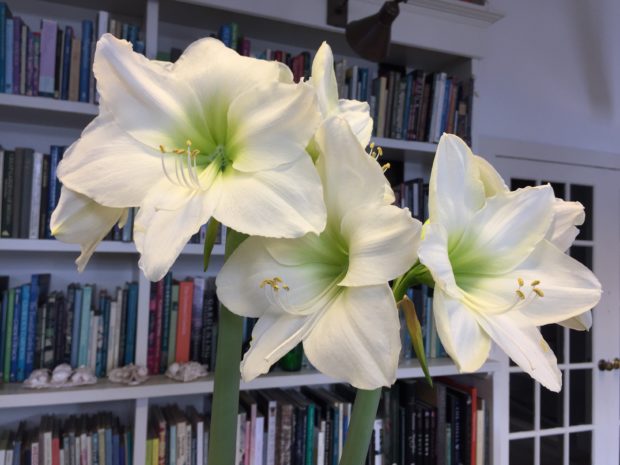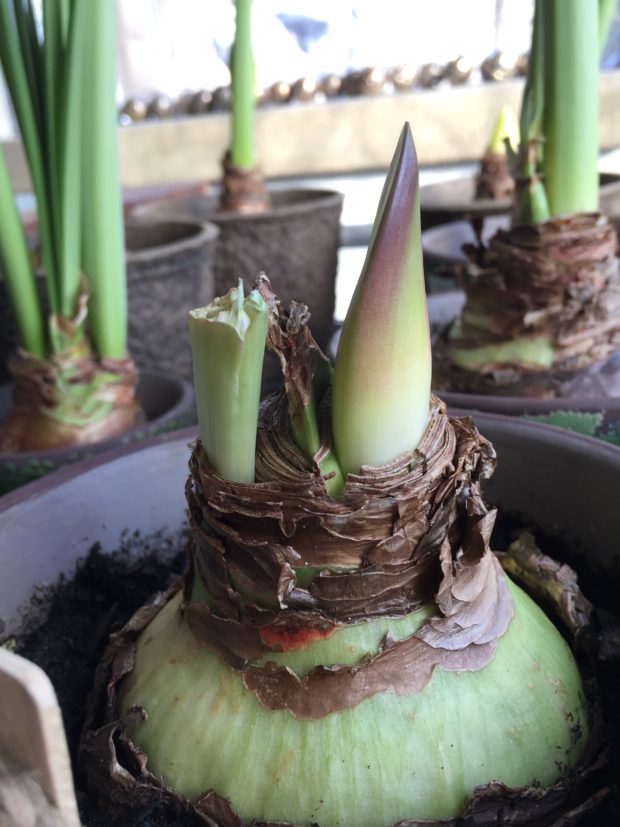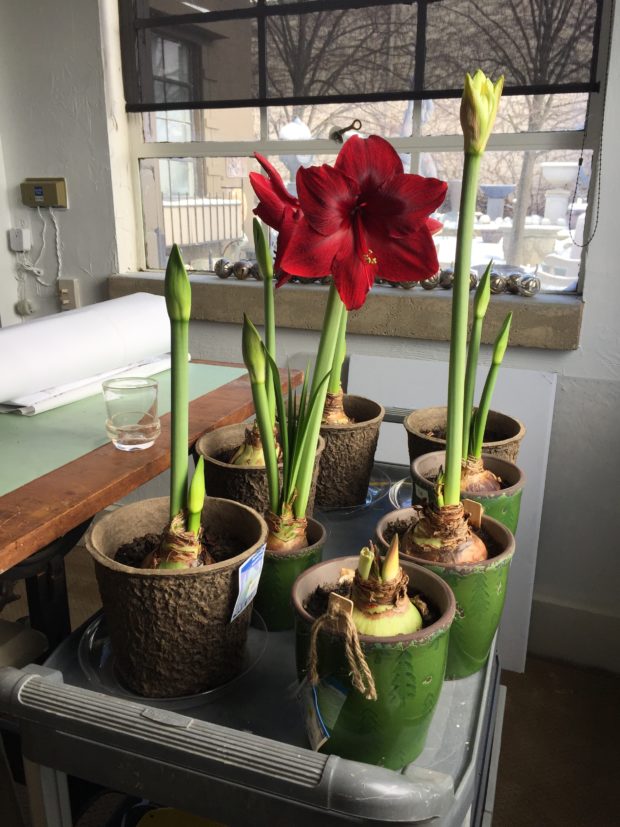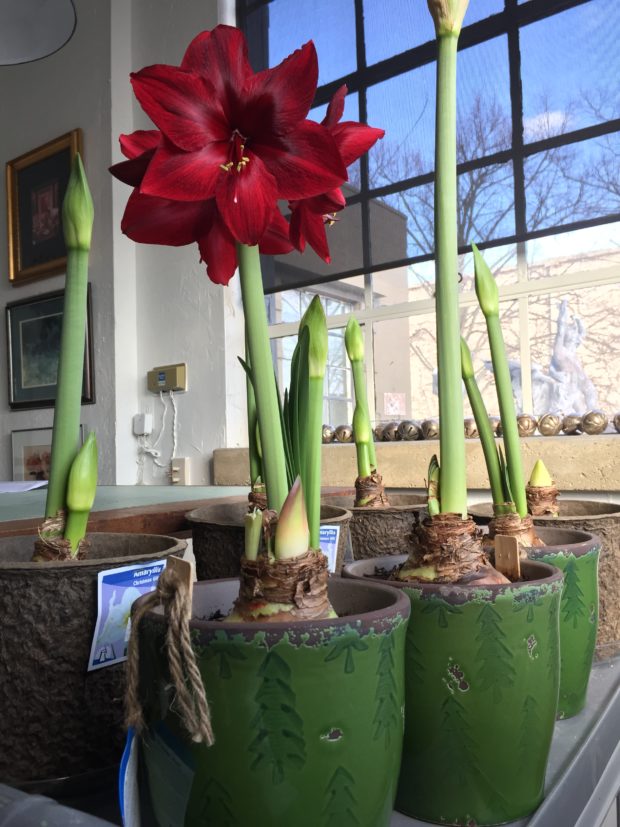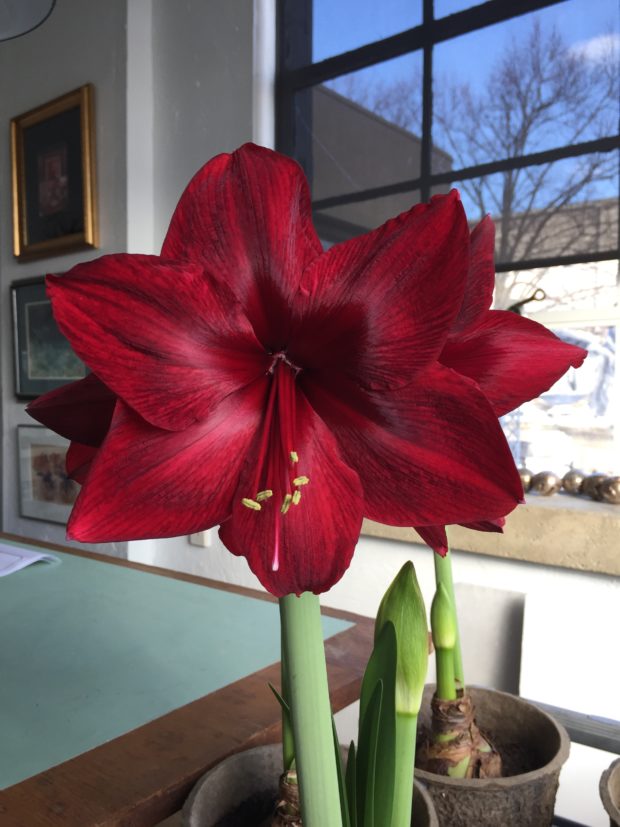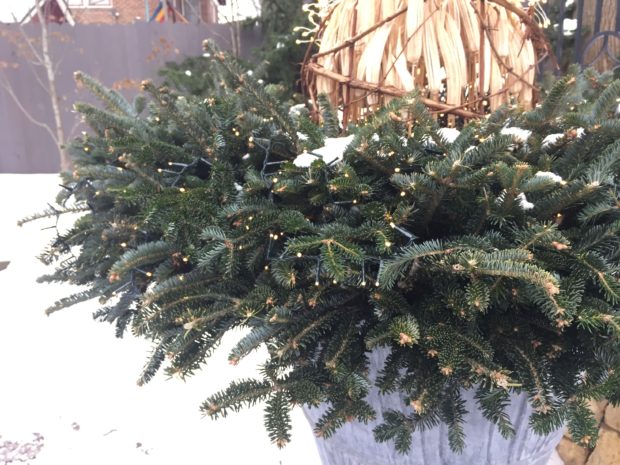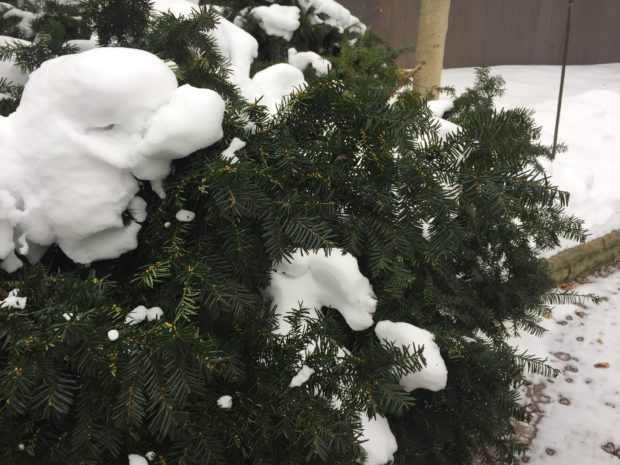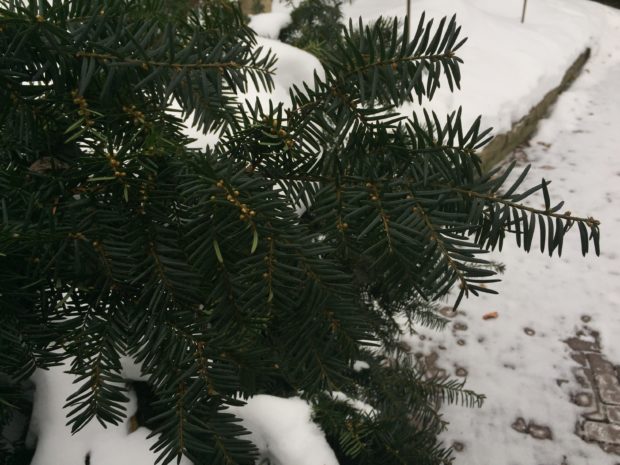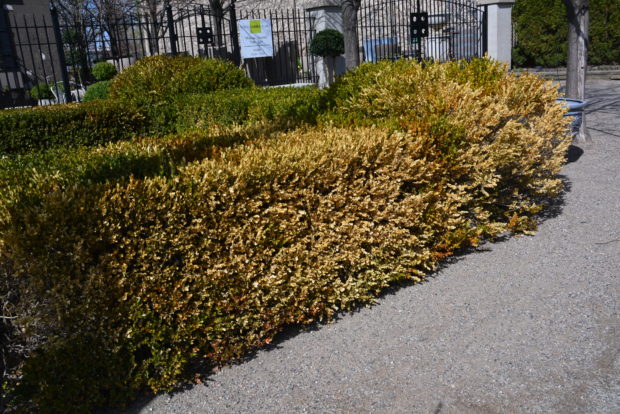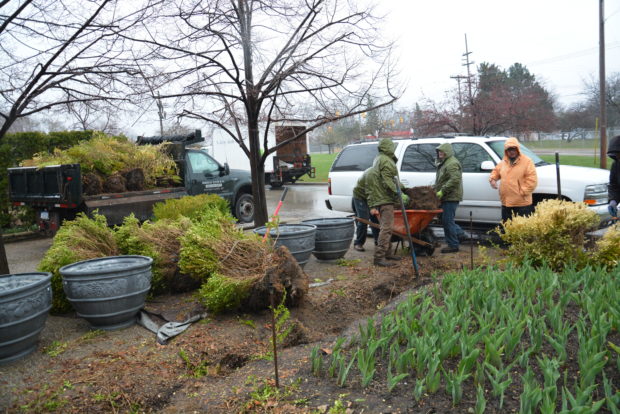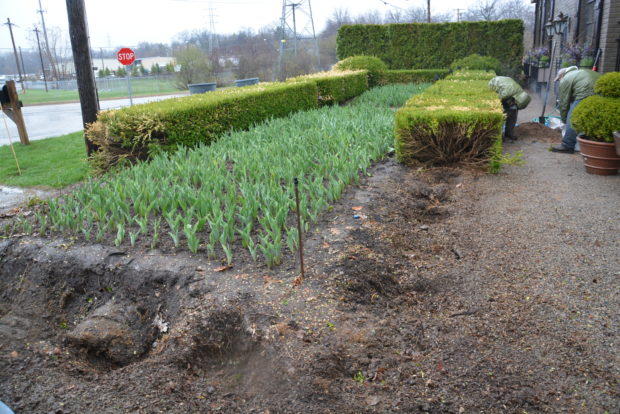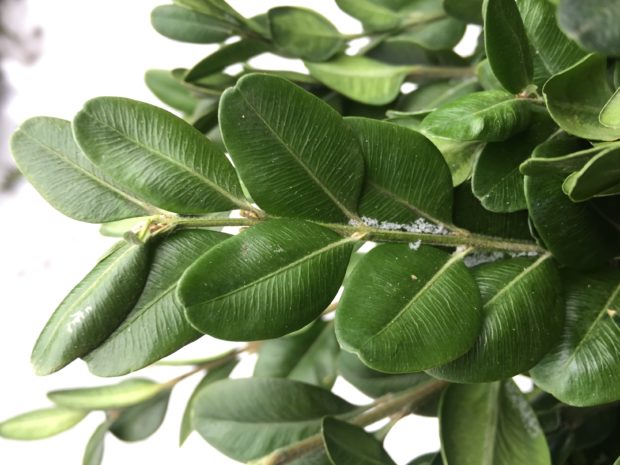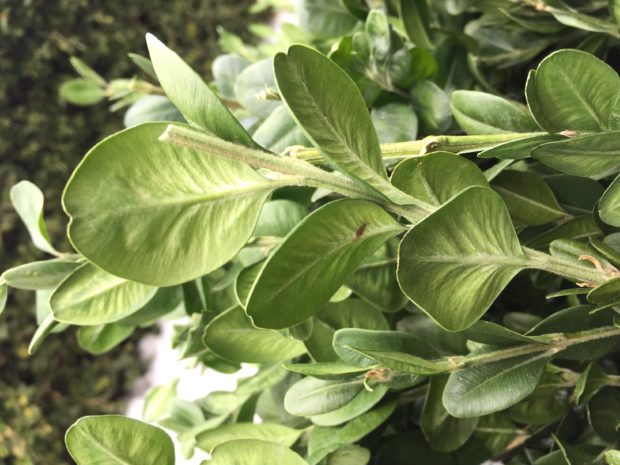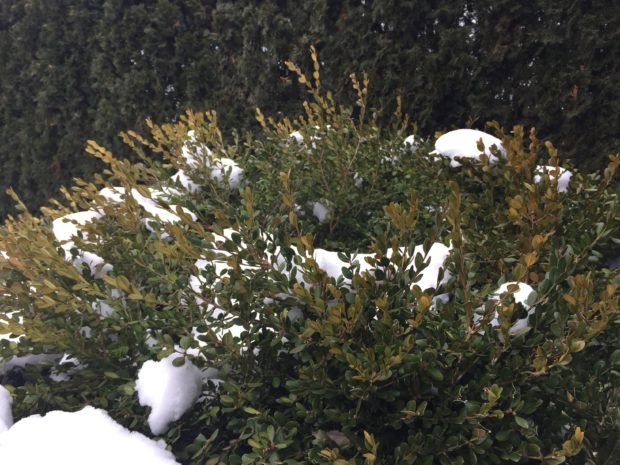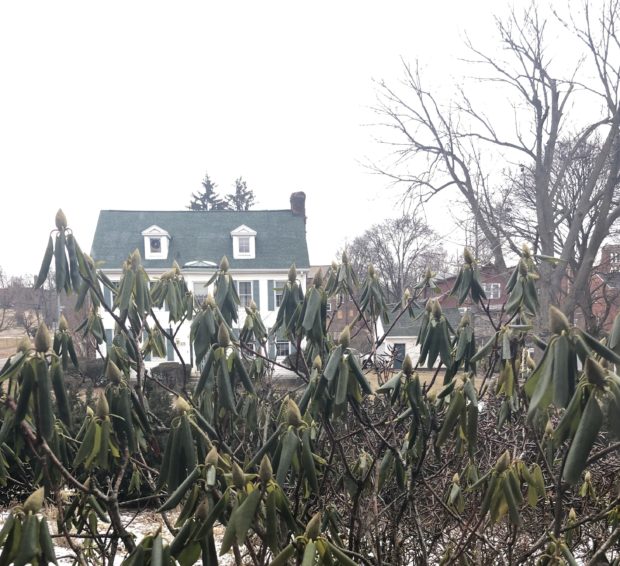 Several weeks ago my neighborhood in Michigan featured a weather extravaganza of substantially below zero temperatures with wind chills approaching -30 degrees, followed promptly by several days in the fifties. Astonishing, this. Nature is as extraordinary as it is unpredictable. Though I have observed and taken note of natural phenomena over a lifetime of seasons, I regularly experience nature up to something I have never seen before. How I love this. What I have never seen before in the landscape and garden not only keeps me interested, it teaches me. I like adding this and that to my body of experience. Yes, I will always and forever be a student of nature. There really isn’t any other choice, is there?
Several weeks ago my neighborhood in Michigan featured a weather extravaganza of substantially below zero temperatures with wind chills approaching -30 degrees, followed promptly by several days in the fifties. Astonishing, this. Nature is as extraordinary as it is unpredictable. Though I have observed and taken note of natural phenomena over a lifetime of seasons, I regularly experience nature up to something I have never seen before. How I love this. What I have never seen before in the landscape and garden not only keeps me interested, it teaches me. I like adding this and that to my body of experience. Yes, I will always and forever be a student of nature. There really isn’t any other choice, is there?
 Those interminable few days I felt imprisoned by extreme cold were followed by days warm enough to be outdoors with or without a jacket. I cannot ever remember a time when 50 degrees felt more delightfully warm and invigorating! How I enjoyed that brief episode of tolerable winter weather. That warm moment had a frigid one hot on its heels.The early morning just days ago was notable for the 1/4″-1/2″ of ice coating every surface, much of which still remains tonight. Yesterday and today? Rain, freezing rain, sleet, snow, and wind on a loop that kept repeating. A whole winter’s worth of nasty weather, one version after another, hour after hour.
Those interminable few days I felt imprisoned by extreme cold were followed by days warm enough to be outdoors with or without a jacket. I cannot ever remember a time when 50 degrees felt more delightfully warm and invigorating! How I enjoyed that brief episode of tolerable winter weather. That warm moment had a frigid one hot on its heels.The early morning just days ago was notable for the 1/4″-1/2″ of ice coating every surface, much of which still remains tonight. Yesterday and today? Rain, freezing rain, sleet, snow, and wind on a loop that kept repeating. A whole winter’s worth of nasty weather, one version after another, hour after hour.
 The bitterly cold weather was not a hardship for me. The National Weather Service had advised in advance we had a polar vortex set to dip down into our zone. I took heed of that prediction. My house, constructed and outfitted specifically almost a century ago to provide shelter did what it was designed to do. I had a warm space, with hot and cold running water and electricity. I was lucky in that regard. So many people lost power. I did fully gear up to take the dogs outside, but our exposure to a hostile environment was as limited as I could make it. Out and in, we were, as fast as having old dogs would permit. A limited exposure to terrifying cold temperatures meant we survived without incident. Terrifying cold? Not the usual thing, but not that unusual either.
The bitterly cold weather was not a hardship for me. The National Weather Service had advised in advance we had a polar vortex set to dip down into our zone. I took heed of that prediction. My house, constructed and outfitted specifically almost a century ago to provide shelter did what it was designed to do. I had a warm space, with hot and cold running water and electricity. I was lucky in that regard. So many people lost power. I did fully gear up to take the dogs outside, but our exposure to a hostile environment was as limited as I could make it. Out and in, we were, as fast as having old dogs would permit. A limited exposure to terrifying cold temperatures meant we survived without incident. Terrifying cold? Not the usual thing, but not that unusual either.
 The details? A down 3/4 length coat that zips up above the neck. A hood on that coat with a velcro closure. A fuzzy warm headband. Flannel lined jeans. Merino wool socks. Shearling lined winter boots. A wool scarf wrapped around my shoulders and face. And wool gloves underneath wool mittens. Did I forget anything? All of this for an exposure to seriously below zero temperatures for less than five minutes. I do indeed have lots of information and gear to comfort and protect me in bitter cold conditions. But what about the landscape outside my door?
The details? A down 3/4 length coat that zips up above the neck. A hood on that coat with a velcro closure. A fuzzy warm headband. Flannel lined jeans. Merino wool socks. Shearling lined winter boots. A wool scarf wrapped around my shoulders and face. And wool gloves underneath wool mittens. Did I forget anything? All of this for an exposure to seriously below zero temperatures for less than five minutes. I do indeed have lots of information and gear to comfort and protect me in bitter cold conditions. But what about the landscape outside my door?
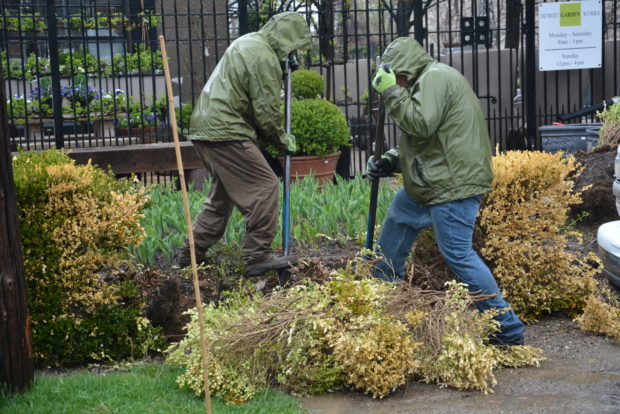 Winter hardiness in plants is a big, wide, and fiercely debated topic. Annual plants are tropical in origin, and perish once the temperature goes below freezing. Perennial plants routinely die back to the ground. The life in their roots is protected by a mass of soil around them. They winter over in a dormant state. Lavender is a sub shrub. Those stems above ground are alive the entire winter. It is no surprise that sub shrubs in my zone can succumb to brutal winter weather. Anything living above ground in my zone is subject to punishing winter weather. The short story is as follows: Deciduous trees in my zone jettison their leaves in the fall, and shut down for the winter. They hibernate. Likewise woody shrubs. The roots below ground remain viable, but the production of chlorophyll goes on hiatus. The fierce winter weather and winds rarely bother the bare twigs of trees and shrubs. Those twigs are shut down, and buttoned up. Once spring is truly upon us, the buds set in late summer will begin to swell. Perennials in my zone die back to ground level, and wait for a call to grow in the spring. Evergreens? The broad leaved evergreens suffer in brutal winter weather more than any other plant. The picture above, taken in the spring of 2014, after the most brutal winter I have ever experienced, was all about digging up some dead boxwood that had been growing for better than twenty years in front of the shop.
Winter hardiness in plants is a big, wide, and fiercely debated topic. Annual plants are tropical in origin, and perish once the temperature goes below freezing. Perennial plants routinely die back to the ground. The life in their roots is protected by a mass of soil around them. They winter over in a dormant state. Lavender is a sub shrub. Those stems above ground are alive the entire winter. It is no surprise that sub shrubs in my zone can succumb to brutal winter weather. Anything living above ground in my zone is subject to punishing winter weather. The short story is as follows: Deciduous trees in my zone jettison their leaves in the fall, and shut down for the winter. They hibernate. Likewise woody shrubs. The roots below ground remain viable, but the production of chlorophyll goes on hiatus. The fierce winter weather and winds rarely bother the bare twigs of trees and shrubs. Those twigs are shut down, and buttoned up. Once spring is truly upon us, the buds set in late summer will begin to swell. Perennials in my zone die back to ground level, and wait for a call to grow in the spring. Evergreens? The broad leaved evergreens suffer in brutal winter weather more than any other plant. The picture above, taken in the spring of 2014, after the most brutal winter I have ever experienced, was all about digging up some dead boxwood that had been growing for better than twenty years in front of the shop.
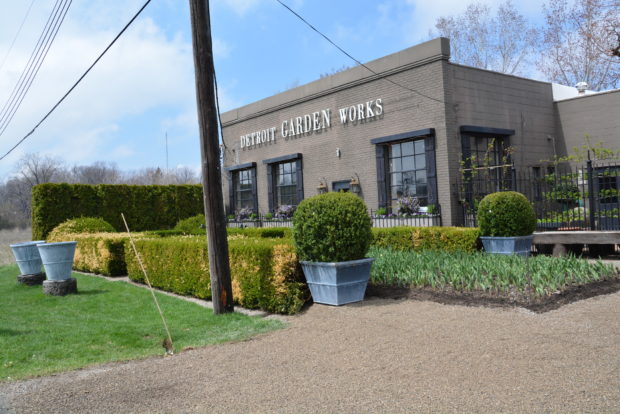 I had no advance warning that we would be subjected to below and just above zero temperatures for lengthy periods. Every brutally cold day that went by was accompanied by an escalating worry. Evergreens of all types were damaged and killed outright in this once in a lifetime fierce winter. The gravelled spaces in the foreground of these pots planted with boxwood this picture show no trace of the plants that died from extreme cold and wind. A friend in the landscape maintenance business persuaded me to stand pat with all of the other damaged plants in this hedge. I am glad I took her advice. Five years after the fact, the south side of this boxwood hedge is all green. These damaged plants did indeed survive.
I had no advance warning that we would be subjected to below and just above zero temperatures for lengthy periods. Every brutally cold day that went by was accompanied by an escalating worry. Evergreens of all types were damaged and killed outright in this once in a lifetime fierce winter. The gravelled spaces in the foreground of these pots planted with boxwood this picture show no trace of the plants that died from extreme cold and wind. A friend in the landscape maintenance business persuaded me to stand pat with all of the other damaged plants in this hedge. I am glad I took her advice. Five years after the fact, the south side of this boxwood hedge is all green. These damaged plants did indeed survive.
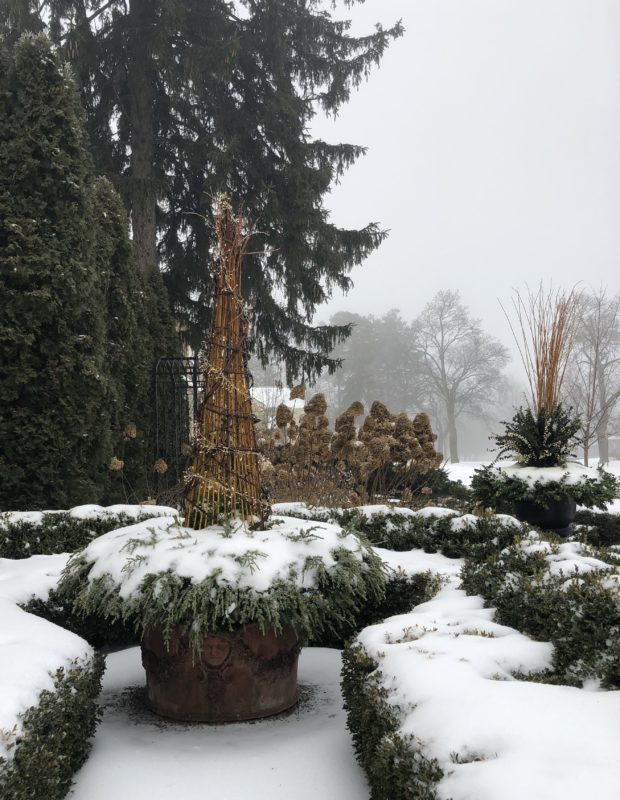 It takes a lot of exposure to gardening and observing that outcome before it becomes clear that every plant’s first and foremost goal in life is to survive. Species annual plants that most surely will die with the first hard frost will produce seeds. Perennials die back to the ground and go dormant-in an effort to survive the winter. Deciduous trees and shrubs quit producing chlorophyll, and shed their leaves prior to winter. Most woody plants start slowing down in August, in anticipation of the dormant season. Needled evergreens under stress will set cones profusely. It astonishes me that an evergreen in decline will put huge energy to providing seed for the next generation. Survival can be all about the next generation. As for the here and now, those needles have evolved to present as little surface area as possible that might be damaged by desiccating winds and cold.
It takes a lot of exposure to gardening and observing that outcome before it becomes clear that every plant’s first and foremost goal in life is to survive. Species annual plants that most surely will die with the first hard frost will produce seeds. Perennials die back to the ground and go dormant-in an effort to survive the winter. Deciduous trees and shrubs quit producing chlorophyll, and shed their leaves prior to winter. Most woody plants start slowing down in August, in anticipation of the dormant season. Needled evergreens under stress will set cones profusely. It astonishes me that an evergreen in decline will put huge energy to providing seed for the next generation. Survival can be all about the next generation. As for the here and now, those needles have evolved to present as little surface area as possible that might be damaged by desiccating winds and cold.
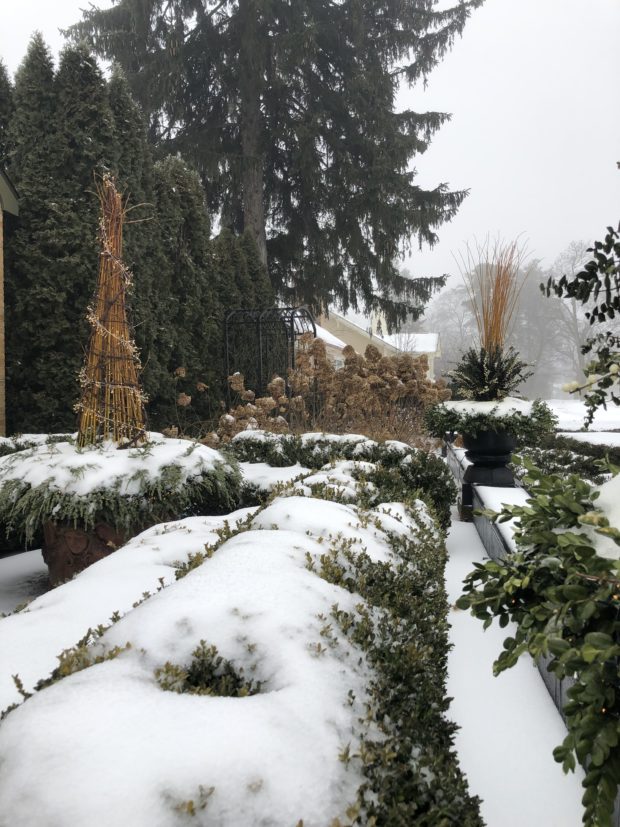 I may fear for the plants in my landscape in a bad winter, but they have evolved such to handle adverse conditions. Very few of them need me to intervene on their behalf. In conditions that are so bad as to threaten their life, there are things gardeners can do to provide their treasured plants with a leg up. Good drainage is a major component of winter hardiness. Even Japanese iris want a well drained winter situation. Burlap can help protect boxwood from desiccating winter wind and sun. VaporGard can provide a similar layer of protection.
I may fear for the plants in my landscape in a bad winter, but they have evolved such to handle adverse conditions. Very few of them need me to intervene on their behalf. In conditions that are so bad as to threaten their life, there are things gardeners can do to provide their treasured plants with a leg up. Good drainage is a major component of winter hardiness. Even Japanese iris want a well drained winter situation. Burlap can help protect boxwood from desiccating winter wind and sun. VaporGard can provide a similar layer of protection.
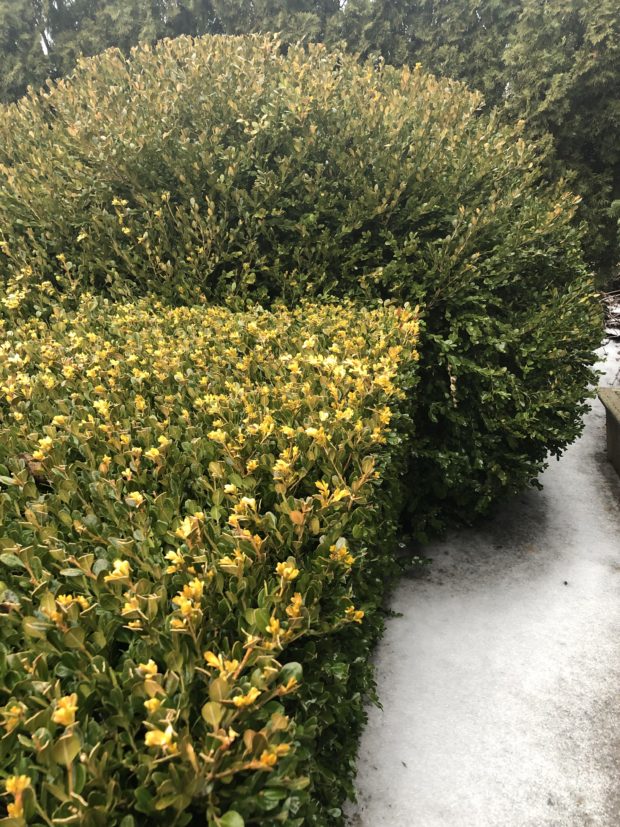 But by and large, plants have very complex and astonishing mechanisms built in via evolution which are geared to protect their chances of survival. My contribution to that effort is minimal. This is a long way of saying that nature looks after its own. The best contribution I can make to my evergreens is to water them liberally before the ground freezes. An evergreen needle or leaf which is loaded with water prior to the frozen ground is a leaf that is better able to survive.
But by and large, plants have very complex and astonishing mechanisms built in via evolution which are geared to protect their chances of survival. My contribution to that effort is minimal. This is a long way of saying that nature looks after its own. The best contribution I can make to my evergreens is to water them liberally before the ground freezes. An evergreen needle or leaf which is loaded with water prior to the frozen ground is a leaf that is better able to survive.
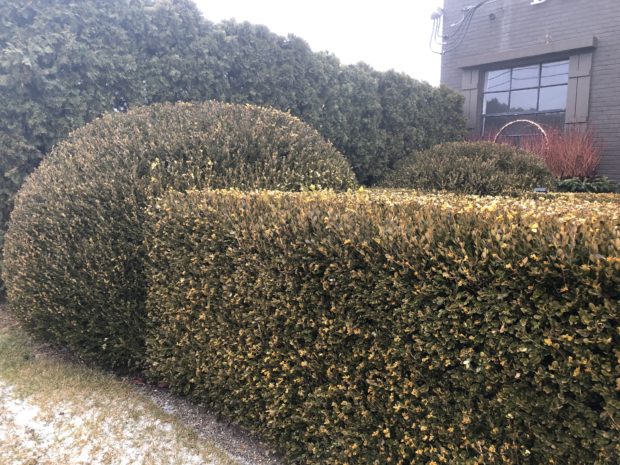 This section of my 25 year old boxwood hedge shows the sure signs of superficial winter wind and cold damage. This trouble can be trimmed off in the spring. What interests me more is that the substantial dead sections from the 2013 winter have healed.
This section of my 25 year old boxwood hedge shows the sure signs of superficial winter wind and cold damage. This trouble can be trimmed off in the spring. What interests me more is that the substantial dead sections from the 2013 winter have healed.
 The evergreens in this pot outside my office door are showing signs of damage from our extreme cold. How could they not? These are cut branches. They have no connection to a parent plant. There are so many ideas that can occupy a garderner’s winter. My evolution as a gardener-on going.
The evergreens in this pot outside my office door are showing signs of damage from our extreme cold. How could they not? These are cut branches. They have no connection to a parent plant. There are so many ideas that can occupy a garderner’s winter. My evolution as a gardener-on going.
